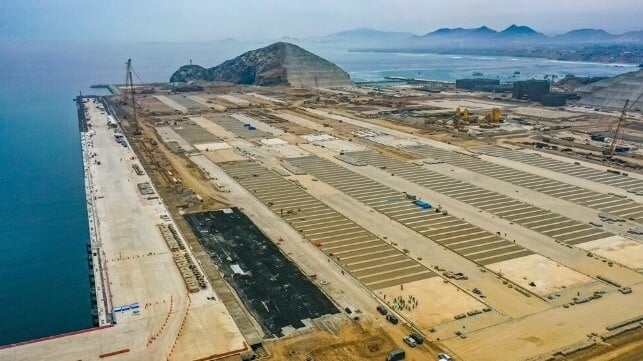Port of Chancay Creates New Competition in Latin America

According to Peru's Ministry of Transport and Communications (MTC), the construction of the new Port of Chancay is 80 percent complete and will be inaugurated in November, likely in the presence of Chinese President Xi Jinping. The launch of the Port of Chancay will strengthen Peru's maritime infrastructure on the Pacific coast, allowing transshipment of cargo to Chile, Colombia, Ecuador and Panama.
The main advantage of this new infrastructure will be the reduction of time and costs of the current maritime trade on the Pacific Coast, where, for the first time, Ultra Large Container ships with a capacity of 18,000 TEU will be able to dock. The transfer time of containers between Peru and China will be reduced from 35 to 23 days, which means a reduction in transportation costs of 30 percent. This cost reduction will be used by other countries such as Brazil, Uruguay, Paraguay and Bolivia to import and export their products. The Port of Chancay will allow companies to send cargo in these ships directly to China, instead of using smaller ships, which today must first go to Mexico or California, as is currently the case. The Lima Chamber of Commerce (CCL) projects that in the first phase, the Port of Chancay will handle between 30 and 40 percent of the national cargo destined for China and Southeast Asia.
Alongside the seaport, Peru’s Ministry of Economy and Finance has long been working on the creation of a Special Economic Zone (SEZ) with the aim of attracting large manufacturers. The goods from this zone will be distributed from Chancay to other Latin American countries. With the port of Chancay, Peru will have a strong impact at regional level, starting with Chile, Ecuador, Colombia and even Brazil, if it manages to integrate with the industrial zone in the inland city of Manaus.
The economic impact will be greatest for Chile, because Peru will be able to receive Post Panamaxes and Ultra Large Container Vessels (ULCVs), which do not have practical operational possibilities in other ports in the region. Chilean ports are too small for these larger, more efficient vessels, and as a consequence will become less competitive in trade with Asian markets.
As the inauguration date approaches, questions have arisen as to whether the construction of the Port of Chancay, where 60% of the shares belong to Cosco Shipping, is a project that brings only benefits to Latin America. Last week, the Peruvian ambassador Alfredo Ferrero presented American investors with an option to build the mega-port of Corio, a proposed site located in the coastal region of Arequipa, which requires an investment of $7 billion. The intention in soliciting American investment is to balance Chinese interests in the region – though the United States could also invest in a mega-port in Chile rather than in Peru.
The opinions expressed herein are the author's and not necessarily those of The Maritime Executive.

